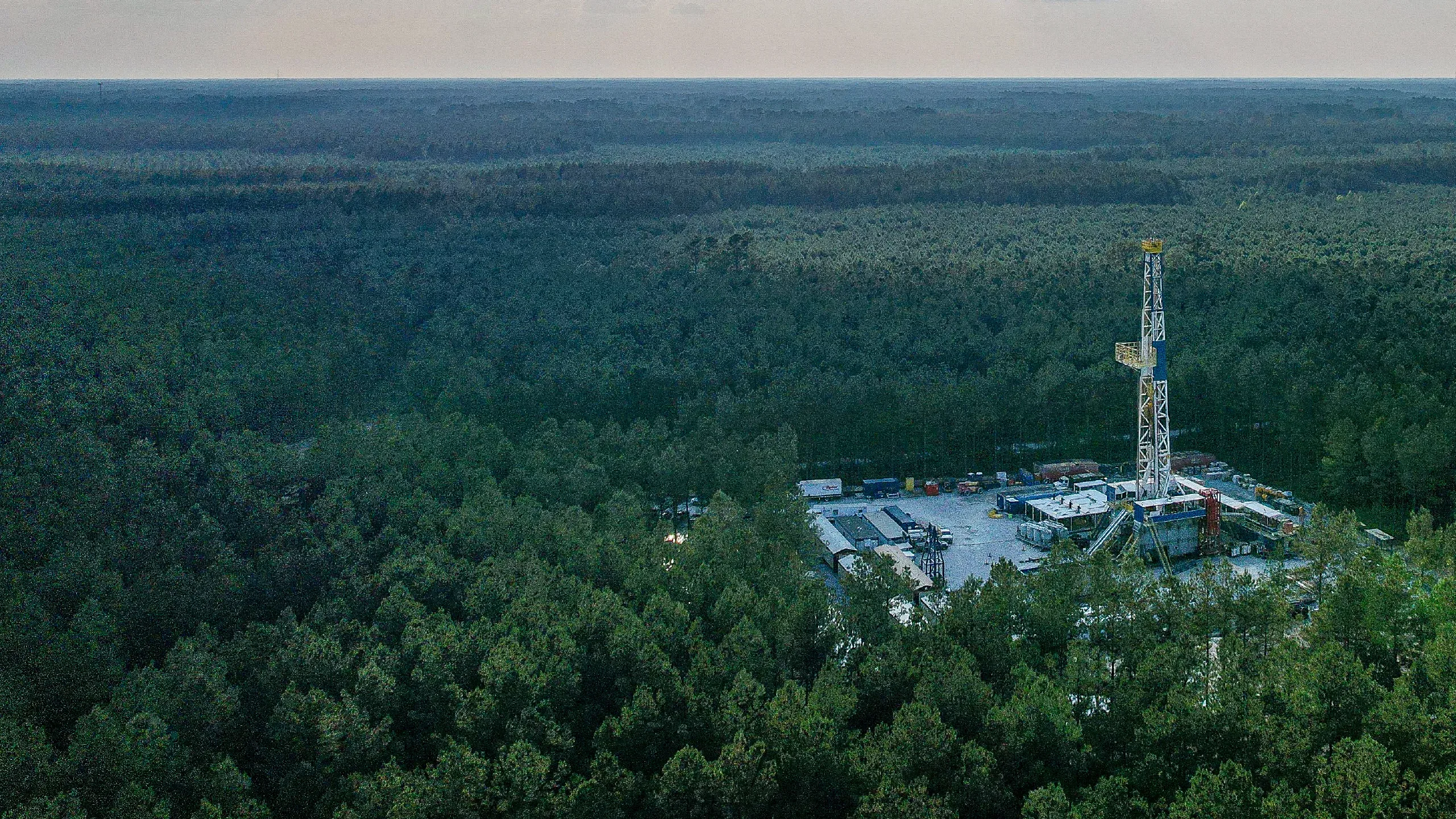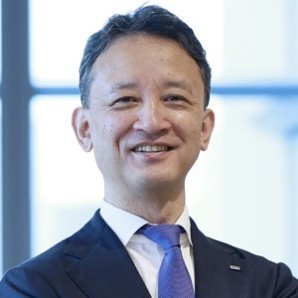
Japan Bets $4B on Louisiana Ammonia in Gulf Coast Shift
Published by Todd Bush on November 10, 2025
A $4 billion blue ammonia production facility just secured final investment decision in Louisiana, marking one of the largest clean energy commitments along the Gulf Coast this year. JERA, Japan's biggest power generator, is partnering with CF Industries and Mitsui & Co. to build what will be the world's largest ammonia production plant by capacity when it comes online in 2029.
The Blue Point project isn't just about size. It sits at the center of a rapidly growing US-to-Asia blue ammonia export corridor, backed by Louisiana's newly granted authority to permit carbon storage wells and powered by cutting-edge carbon capture technology. For an industry looking to scale clean fuels quickly, this is a flagship moment.

CF Industries, Japanese partners to build $4B 'blue' ammonia plant in Ascension Parish
The Numbers Behind the Build
The facility will sit in Ascension Parish at CF Industries' Blue Point Complex, positioned right in the heart of Louisiana's Mississippi River corridor. With an annual nameplate capacity of 1.4 million metric tons, it's designed to produce low-carbon ammonia using natural gas feedstock paired with autothermal reforming (ATR) technology. The carbon capture system is expected to trap more than 95% of CO₂ emissions generated during production.
Here's how the ownership breaks down across the three partners:
- CF Industries holds 40% and will handle operations and maintenance
- JERA owns 35% with a conditional option to reduce its stake to 20% by end of 2025
- Mitsui & Co. takes 25% and brings global trading expertise
Pre-construction work kicked off in 2025, with full construction slated to begin in 2026. Production is targeted for 2029, pending regulatory approvals and policy support.

Why Louisiana, Why Now
Timing matters. Louisiana gained Class VI primacy in late 2023, giving the state authority to issue permits for carbon storage wells without waiting on federal EPA approval. That regulatory shift makes Louisiana one of only four states with this capability, alongside North Dakota, Wyoming, and West Virginia. Class VI primacy speeds up the permitting process and gives project developers more certainty around timelines. The state now has more than 43 announced carbon capture projects worth billions in potential federal tax credits.
The state's geology also plays a role. Louisiana's underground saline formations offer significant CO₂ storage potential, which is critical for projects like Blue Point that rely on permanent sequestration. Occidental Petroleum's subsidiary, 1PointFive, will transport and sequester approximately 2.3 million metric tons of captured CO₂ annually at its Pelican Sequestration Hub. That's more CO₂ stored than some small countries emit in a year.
The infrastructure advantage is real too. Louisiana already has extensive pipeline networks, port access, and industrial know-how. CF Industries has been operating its Donaldsonville ammonia plant, the world's largest, since the early 1970s. The Blue Point site benefits from this existing footprint.
"Our joint venture represents tangible progress towards building a reliable and affordable low-carbon ammonia value chain to meet what we expect to be robust global demand for low-carbon ammonia for both traditional and new applications."
Tony Will, President and CEO, CF Industries
The Japan Connection
JERA's involvement signals where much of this ammonia is headed. Japan and South Korea are aggressively pursuing ammonia co-firing in power plants as a way to decarbonize their electricity grids without completely rebuilding infrastructure. JERA has already demonstrated 20% ammonia co-firing at its Hekinan power plant and plans to scale commercial operations. The company needs reliable, large-volume suppliers to make that vision work.
This isn't JERA's only bet on Gulf Coast ammonia. The company is exploring offtake opportunities across multiple projects in Texas and Louisiana. Meanwhile, ExxonMobil signed a deal in May 2025 with Marubeni to supply 250,000 tonnes of low-carbon ammonia annually from its Baytown, Texas facility, also targeting Japanese power generation. That deal underscores the momentum building around the US-to-Asia ammonia trade route.
Mitsui brings global trading muscle to the Blue Point partnership. The company has a track record in natural gas value chains and ammonia markets, and it's using this project to anchor a broader low-carbon ammonia strategy worldwide. Its equity stake and offtake agreement give it direct exposure to one of the largest production facilities in development.

1PointFive's Pelican Sequestration Hub
Technology and Carbon Capture
Technip Energies secured the engineering, procurement, and construction (EPC) contract for Blue Point in what the company described as a "major" award, meaning it exceeds €1 billion ($1.1 billion). Topsoe is providing its SynCOR ATR ammonia plant technology, which integrates low-carbon hydrogen production with ammonia synthesis. The ATR process uses oxygen instead of air in the reforming step, which improves efficiency and makes CO₂ capture more effective.
The captured carbon doesn't stay on site. It gets compressed and piped to 1PointFive's Pelican Sequestration Hub, where it's injected into deep geological formations more than a mile underground. The hub is part of a growing network of carbon storage infrastructure across Louisiana and Texas designed to handle industrial-scale CO₂ volumes.
This integrated approach, pairing ammonia production with permanent carbon storage, is what makes the project "blue" rather than "grey." Grey ammonia, which still dominates global production, releases all CO₂ emissions into the atmosphere. Blue ammonia captures and stores them. Green ammonia, which uses renewable electricity and electrolysis, produces no emissions at all but remains far more expensive and limited in scale.

"Collaboration and partnership are at the heart of JERA's strategy to achieve our decarbonization goals. The U.S. remains a cornerstone market for JERA, and this initiative underscores our long-term commitment to expanding our presence with diversified and sustainable energy projects."
Yukio Kani, JERA Global CEO and Chair
Gulf Coast Momentum
Blue Point is one piece of a much larger Gulf Coast buildout. The region is quickly becoming North America's center of gravity for low-carbon hydrogen and ammonia production. Other major projects include ExxonMobil's Baytown facility, which targets 1 million tonnes per year of blue ammonia, and several ventures in Texas positioning the state as a blue ammonia hub.
The Gulf Coast's advantages are hard to replicate. Natural gas is abundant and cheap. Existing petrochemical infrastructure can be adapted for hydrogen and ammonia. Port facilities enable large-volume exports. And the geology supports massive CO₂ storage capacity. These factors, combined with federal tax credits for carbon capture under Section 45Q, make the region attractive for multi-billion-dollar capital investments.
Federal hydrogen hub funding is also flowing to the region, though Louisiana's projects are largely driven by private investment rather than Department of Energy grants. Still, the presence of hydrogen hub activity across the country signals growing government support for the sector.
>> In Other News: CALCAREA and AURELIA Launch Collaboration to Bring Ocean-Based Carbon Capture to Commercial Shipping
Market Outlook and Applications
Ammonia demand is projected to double by 2050, with low-carbon varieties making up a growing share. Traditional uses in fertilizer remain the largest market, but new applications are emerging fast. These include:

The Future of Ammonia: Demand & New Applications
JERA and Mitsui are focused on the Asian market, where power companies and industrial users are seeking reliable low-carbon ammonia supplies. Europe is another target market for CF Industries, which already exports conventional ammonia to European buyers. The ability to market low-carbon certified ammonia at a premium creates new revenue opportunities.
Pricing remains a critical question. Blue ammonia costs more to produce than grey ammonia due to the added expense of carbon capture. However, carbon pricing mechanisms, regulatory mandates, and corporate sustainability commitments are creating demand for cleaner products even at higher costs. The economics work better in markets with strong climate policies.
What Comes Next
Construction jobs will start ramping up in 2026, with an estimated 1,500 workers needed during the build phase. Once operational, the facility will create permanent jobs in operations, maintenance, and logistics. Louisiana Governor Jeff Landry has emphasized the economic development benefits, particularly for Ascension Parish and the surrounding region.
The project's success could spur additional investments in the area. CF Industries has signaled interest in expanding its Blue Point complex beyond this initial facility, and other companies are watching closely to see how the first wave of blue ammonia projects performs both technically and financially. If Blue Point hits its targets for cost, capacity, and carbon capture efficiency, expect more announcements to follow.
The regulatory environment will matter. Federal support for carbon capture, including 45Q tax credits and potential hydrogen production tax credits, directly impacts project economics. Any changes to these policies could affect investment decisions for future phases or similar projects. Louisiana's continued commitment to Class VI permitting and carbon storage development will also play a role.
JERA, CF Industries, and Mitsui are betting that the global shift toward low-carbon fuels is real and durable. They're putting $4 billion on that bet. If they're right, the Gulf Coast could cement its position as a major exporter of clean energy products for decades to come.
Subscribe to the newsletter
Daily decarbonization data and news delivered to your inbox
Follow the money flow of climate, technology, and energy investments to uncover new opportunities and jobs.
Companies
-
CF Industries Holdings
CF
-
1
1pointFive
z
-
Occidental Petroleum Corporation
OXY
-
ExxonMobil
XOM
-

TechnipFMC
FTI
Latest issues
-
North America’s Carbon Removal Year in Review: Winners, Losers, Surprises
Inside This Issue 🌎 North America's Carbon Removal Year in Review: The Deals, Policies, and Milestones That Shaped 2025 🚢 Hapag-Lloyd And North Sea Container Line Win ZEMBA Second E-Fuel Tender 🪨 ...
-
CCS Just Got Cheaper Than Anyone Expected
Inside This Issue 🧪 Shrinking the CCS Energy Penalty: A Molten Borate Breakthrough Promises Viability for Hard-to-Abate Canadian Oil & Gas 👤 Syntholene Energy Corp Appoints Former CEO of Carbo...
-
The CO₂ Pipeline Everyone Said Couldn’t Happen
Inside This Issue 🛠️ Tallgrass Found the CO2 Pipeline Formula Others Missed 🚂 HyOrc & Zeltech Advance Practical Locomotive Retrofit Pathway as U.S. Rail Emissions Face Growing Scrutiny 💰 Secre...
Company Announcements
-
Gevo, Inc. (NASDAQ: GEVO) announced that BeZero Carbon Ltd., a global carbon rating agency, has upgraded its rating for the Gevo North Dakota (GND) facility, which has carbon capture and storage, t...
-
Electric Hydrogen Selected By Synergen Green Energy For 240MW U.S. Green Ammonia Project
Electric Hydrogen, U.S. manufacturer of advanced electrolyzer plants, announced it has been selected by Synergen Green Energy Inc., a leading commercial-scale developer of green hydrogen and ammoni...
-
Neste and the Cathay Group have agreed on the supply of Neste MY Sustainable Aviation Fuel™ for the group’s aviation operations across three major aviation regions: Europe, the United States, and A...
-
Wicomico County Selects Waga Energy To Upgrade Landfill Gas To RNG In Maryland
Wicomico County has selected Waga Energy to build, own, operate, and maintain an RNG production unit at the Newland Park Landfill in Salisbury, Maryland. When in operation, the plant will provide m...